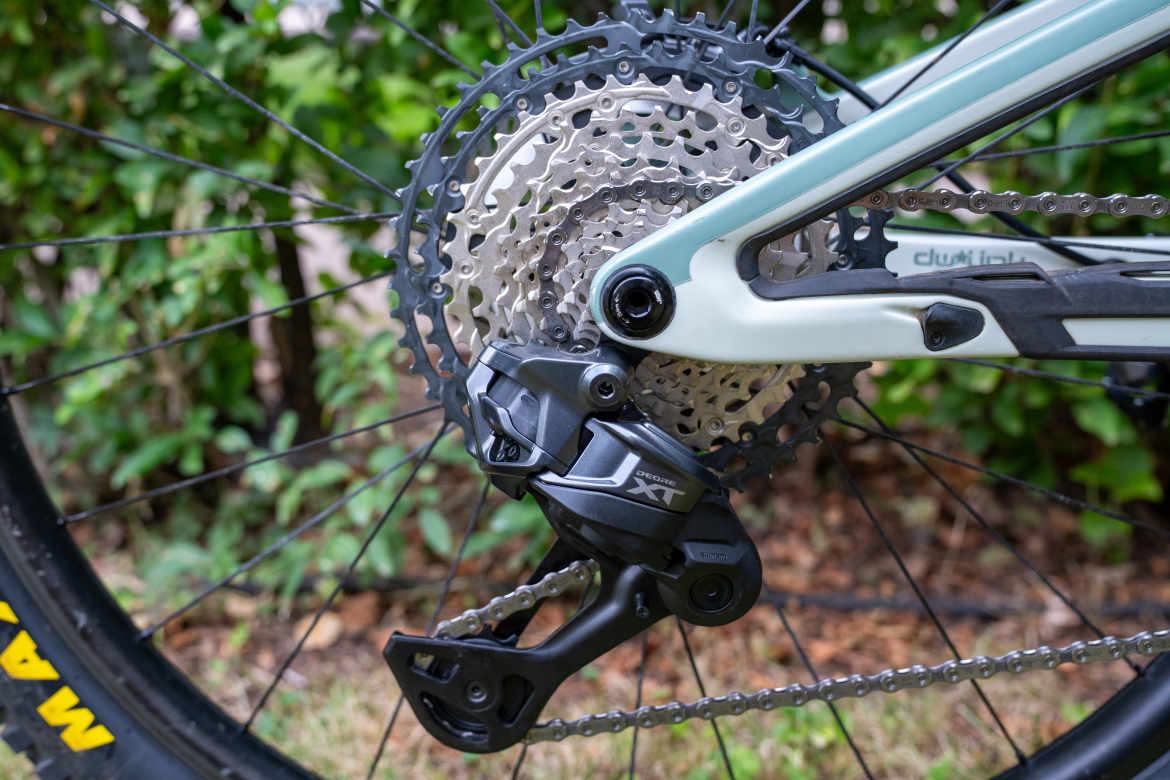
Shimano may have been late to the game with its first wireless drivetrain offering, but once they committed to the concept, they delivered with classic Shimano quality and performance. A mere two weeks after the announcement of the XTR Di2 Wireless drivetrain, Shimano dropped an XT version, bringing wireless shifting to a more affordable price point.
I’ve been an electronic drivetrain holdout for many years, but when the opportunity came up to test the new wireless XT group, I agreed. I’ve pedaled hundreds of miles of chunky, challenging singletrack over the last several months while running the latest XT drivetrain on my Pivot Trailcat SL, and I might have to eat some of my words about keeping electronics off my bike.
Shimano DEORE XT M8200 Di2 drivetrain key specs
- Wireless shifting
- SHADOW ES reduces impacts on rocks and roots and improves chain tension
- Automatic impact recovery
- Protected, removable, rechargeable battery
- Haptic shifting feedback
- Adjustable shifter paddles
- MSRP: $1,380 for complete drivetrain, $860 for upgrade kit (derailleur, shifter, battery, charger)
- Buy from Worldwide Cyclery and Jenson USA
The Deore XT drivetrain features almost the same technology as the XTR version. Shimano notes that one main difference is that the XT derailleur has an alloy cage compared to XTR’s carbon cage, but “it does not limit performance.” An XT wireless upgrade kit, including derailleur, shifter, battery, and charger, costs $860 compared to XTR’s $985. The price differential is greater for the entire drivetrain, with XT priced at $1,380 compared to XTR’s $2,030.
Since Jeff exhaustively covered the technology Shimano introduced with this substantial step change in their new wireless drivetrains, I won’t rehash every point and will instead focus on what I think are the most notable and interesting technological improvements.
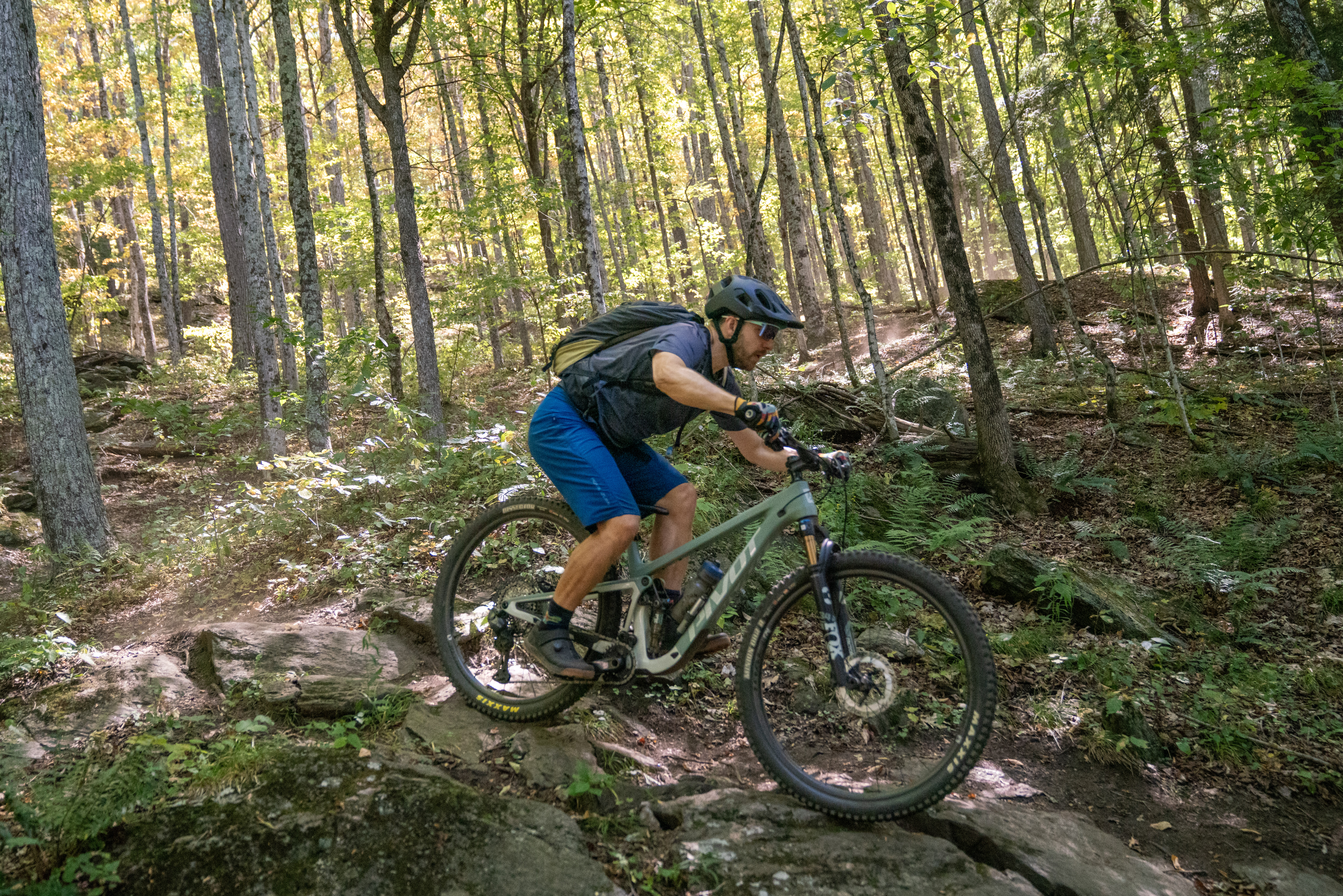
A more robust drivetrain
Both SRAM Eagle Transmission and Shimano’s Wireless Di2 drivetrains boast improved durability compared to their mechanical ancestors. The new XT derailleur features SHADOW ES technology, which “delivers a wedge-shaped design that reduces the derailleur’s front-facing surface area and eliminates edges that could catch on rocks and roots,” according to a press release. When the derailleur does inevitably hit a rock, it is designed to absorb the impact and reset to its original position automatically.
This is a welcome change from Shimano’s mechanical counterparts. While I’ve had great luck with one XTR derailleur, I unfortunately bent both an XTR and XT mechanical derailleur out of alignment in less than two weeks of riding this spring. I’m a big fan of components that promise durability and longevity, and thanks to a well-braced linkage and solid pulleys, Shimano’s new wireless parts do just that.
While Shimano naturally had to integrate a battery into the design, they worked to protect it by placing it in the middle of the derailleur and shielding it with a detachable cover. I’ll confess: I have limited experience with SRAM’s electronic drivetrains, but I’ve watched my friends remove their batteries and replace them with a plastic block while washing their bikes. In contrast, I’ve personally left my battery installed in the XT derailleur through multiple washes without issue.
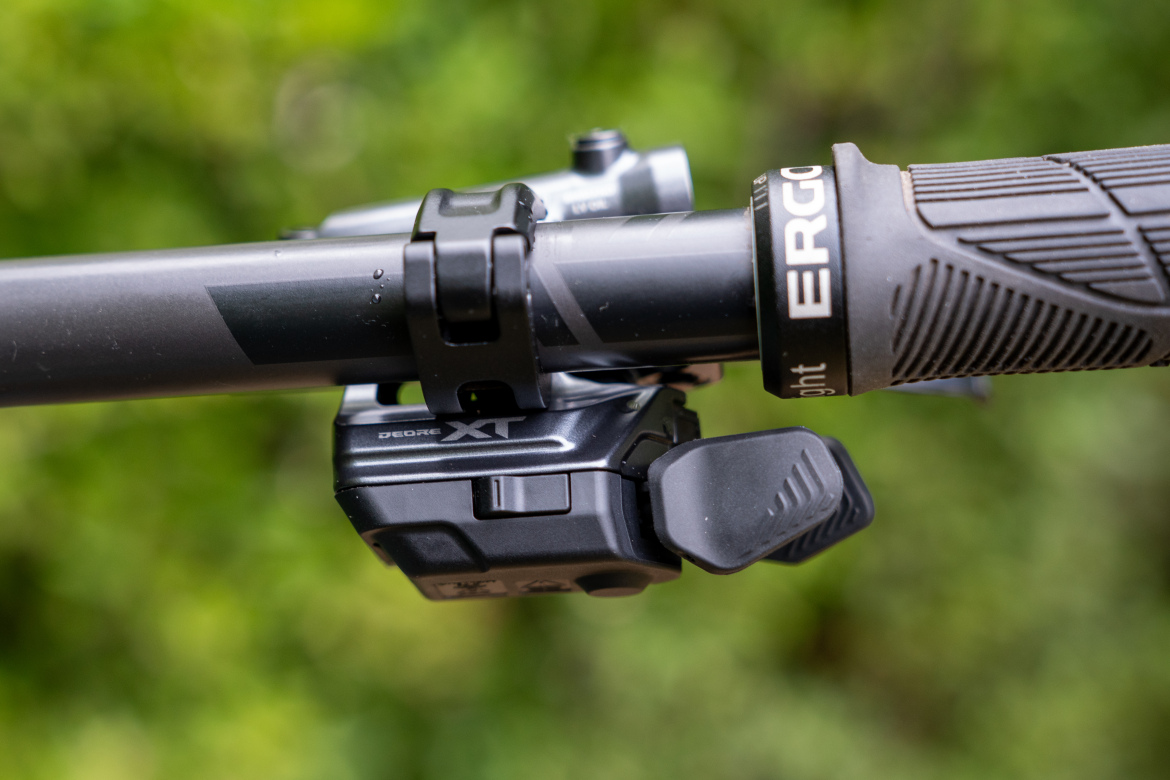
A natural — and adjustable — shifter feel
SRAM’s standard shifter paddles just look… awkward and cheap. Instead of following SRAM’s lead with a pair of cheap plastic buttons, Shimano crafted an electronic shifter with mechanical paddles.
What does this mean?
Essentially, Shimano’s shifter provides mechanical feedback every time you shift. You still feel the click in the shifter, and you’re confident that you’ve initiated a shift. That said, the amount of pressure required to actuate a shift is much lighter than with a mechanical drivetrain, and I sometimes find myself bumping the shifter paddles unintentionally.
Share your Shimano DEORE XT M8200 Di2 drivetrain review
If you were still in the habit of upshifting with your index finger instead of your thumb, Shimano has finally done away with that option — it’s now thumbs all the way.
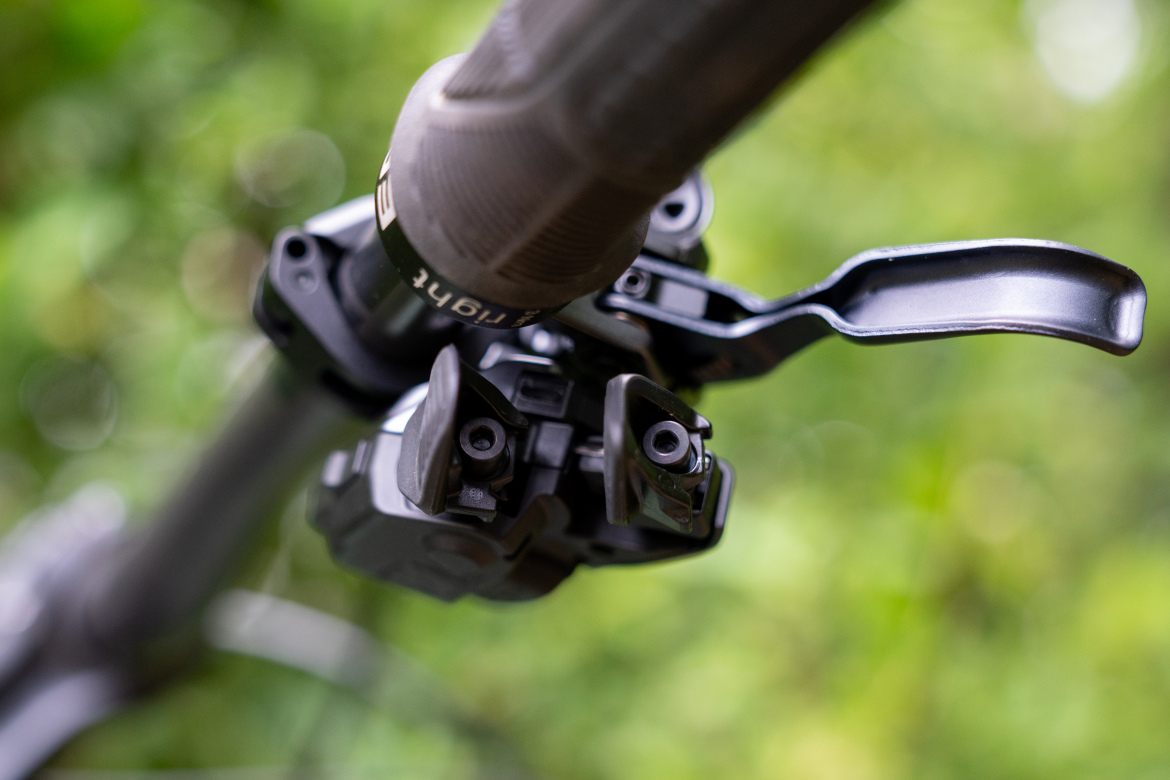
However, that change has allowed Shimano to introduce a new level of adjustability into the shifter paddles. Now, riders have the ability to independently adjust the angle of each shifter paddle with a hex wrench, in addition to the roll of the shifter on the handlebar. I was surprised how much I liked this feature, and thanks to this adjustability, shifting is more natural and more comfortable than ever before.
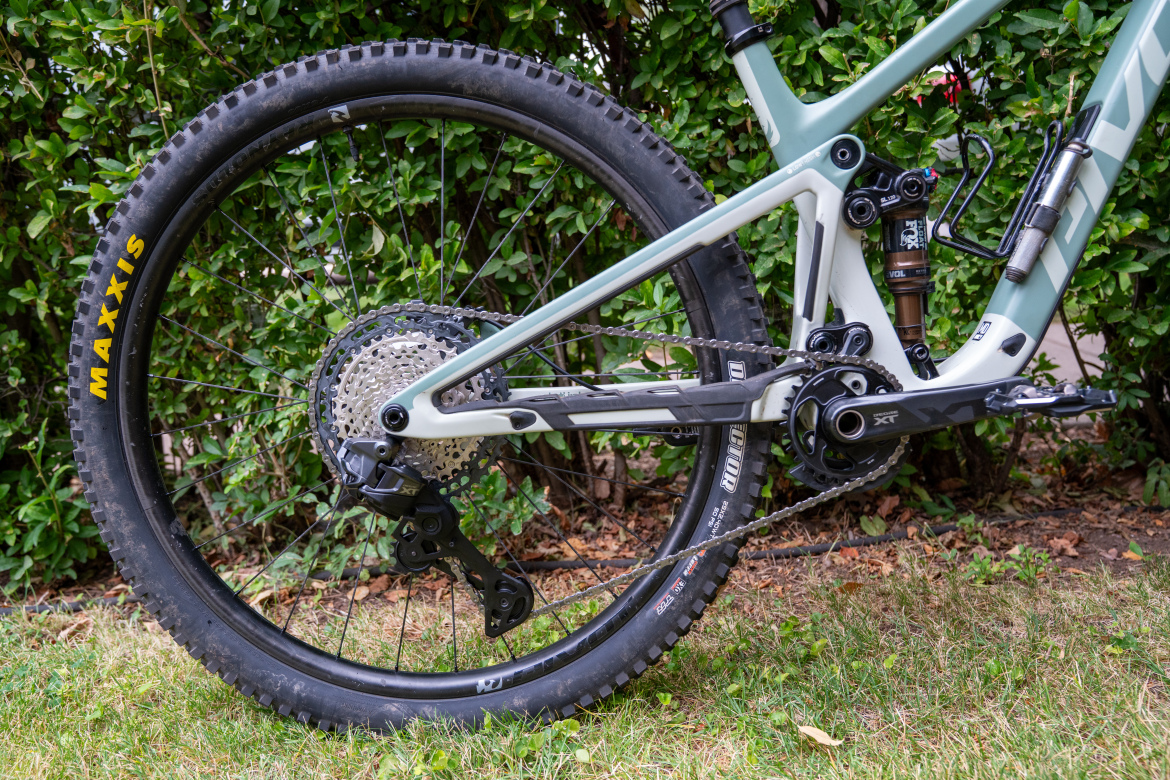
Fast shifts
It’s easy to tap or long-press and shift two gears with the new wireless Di2, and holding the shifter paddle will instruct the drivetrain to continue shifting in that direction until you release it. If you wanted to, you could hold the shifter and run through your entire cassette from one end to the other.
In practice, I’ve found there’s no real reason to hold the shifter down, but dumping 2-3 gears at a time is a big win.
For years, riders complained about SRAM Transmission’s slow shifting speed. This September, SRAM announced a firmware update for its drivetrains that substantially increased the shifting speeds. Note that nothing changed mechanically with the drivetrain — the company just pushed a new software update to the system. Is it a coincidence that they released this firmware update mere months after Shimano’s wireless Di2 launch? I think not.
Riders want fast shifting, and Shimano delivers.



Out on the trail with the wireless XT Di2
While I’ve pedaled bikes with wireless SRAM AXS drivetrains and wired Di2 drivetrains in the past, this wireless XT Di2 test was my first long-term test of an electronic drivetrain. For years, I’ve resisted the bike industry’s relentless push to install electronics on our mountain bikes. From electronic shifting to dropper posts and suspension adjustment (and more), I hate this push to infest every area of our lives with finicky electronic bullshit. I ride my bike to get away from electronics. I head out into the mountains precisely because I hate that modern culture is stealing our days with glowing screens, internet connectivity, artificial intelligence, firmware updates, battery chargers, innumerable cables connecting everything…
I want my mountain bike experience to be simple. I don’t want to think about my gear — I just want to ride. I don’t want to worry about whether or not my derailleur is charged; I just want my bike to fucking work.
I decided to approach this test with that ethos in mind. I got the drivetrain installed, adjusted the shifter paddles, and then I just rode it. I rode, rode, and rode. I cranked out hundreds of miles of singletrack, including numerous backcountry epics, and my only 50-mile MTB ride of the year (so far).
And here’s the thing: from backcountry epics to frontcountry loops, and brutal terrain with multiple rock strikes, wet conditions, and more, the drivetrain worked.
It just worked.
Charging the battery has honestly been much less of an issue than I thought it would be. I do sometimes get nervous, because I’m not quite sure how long a charge will last. I’ve heard anecdotally that Shimano’s battery lasts longer than SRAM’s, but I personally can’t confirm or deny that claim. What I can say is that I often go weeks between battery charges.
My main reminder to recharge the battery is preparing for a big trip or a massive outing. I charge the battery, go on the big trip, and then forget to charge it for a few weeks after that and… it’s just shifting all fine and dandy.
When the bike is parked in the garage, yes, pulling the battery out of the derailleur, bringing it into the house, plugging it into the charger, and then reversing the whole process can be a hassle. However, I realized that when I have the bike loaded in my camper van, the derailleur is easily accessible and literally just two feet from my USB charging station. So now, the battery charger lives in the van, and I tend to recharge the battery exclusively in the van.

How many derailleurs do you have to break for the new Di2 to make sense?
As I mentioned above, I love seeing brands deliver products that are both more capable and more durable than ever before. The new XT Di2’s burly design and automatic impact recovery technology are extremely compelling.
It’s tough to know if a given rock strike would have destroyed one of Shimano’s previous derailleurs or not, but I can report that while I’ve had a couple of rock hits on the new XT, it’s still rolling along just fine. Considering I bent two derailleurs in less than a month this spring, I think there’s really something to this new, more robust design.
That said, even if you can reuse your existing crankset, cassette, and chain, it still costs $860 to upgrade to wireless Di2, with the derailleur alone costing $570. Right now, mechanical derailleurs are ridiculously cheap. While the MSRP might be $145, XT derailleurs are on sale all across the internet (and even in bike shops). A quick search revealed numerous sites selling mechanical XT derailleurs for $75-85.
At $75, you’d need to completely shatter 12 mechanical derailleurs just to break even on a Di2 upgrade. Despite the new derailleur’s more robust construction, there’s no guarantee that one of those rock hits wouldn’t destroy even the hardiest of derailleurs. And don’t forget: there’s a weight penalty for this burly derailleur, too.
So yes, I love the trend of more robust products… but will the new XT’s design actually save you money? Probably not.
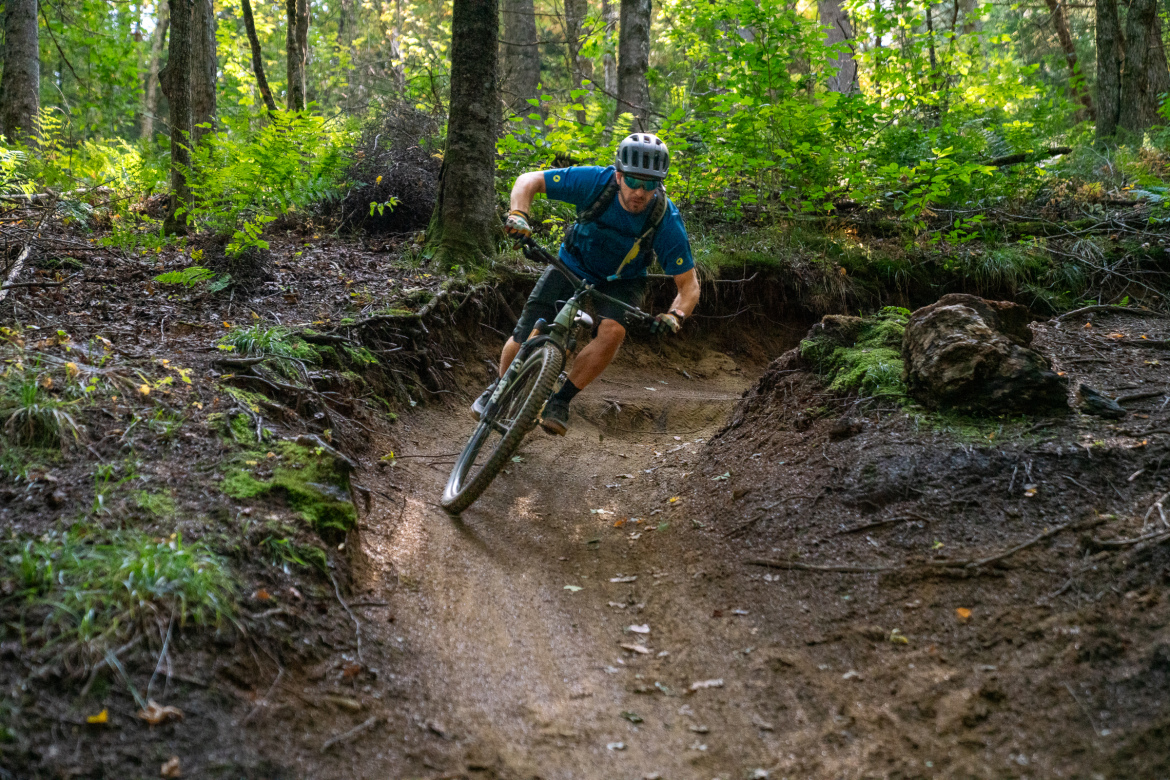
Is wireless shifting more reliable than mechanical?
I’ll be frank: Shimano’s mechanical drivetrains have always provided fantastic shifting. I’ve jumped back and forth between XT Di2 on my Pivot Trailcat SL and mechanical XTR on my Switchblade all summer long, and honestly, both of them work great.
The difference is in the reliability. While the new XT is more robust and may result in fewer total derailleur replacements, that robustness also means that it’s knocked out of alignment much less frequently. There also isn’t a settling-in period after installation that requires readjustment. You don’t need to worry about fiddling with barrel adjusters as your cables stretch or things get bumped.
When a mechanical derailleur is well-adjusted, it’s hard to argue that it performs any worse than Di2. But Di2 actually stays well adjusted with minimal work, meaning it more reliably provides flawless shifting over a longer period of time.
When weighed against the occasional annoyance of charging a battery, I have to admit: it’s probably easier to charge a battery once every few weeks and never have to worry about adjusting your derailleur ever again.

Am I switching to team wireless?
After months of riding Shimano’s new wireless XT Di2 drivetrain, am I switching from team mechanical to team wireless?
I can say this: I’m not planning to take the new Di2 off of my Trailcat anytime soon. This new drivetrain has proven to be robust and confidence-inspiring, and charging a battery is only an intermittent annoyance. The shifting has been superb, and if the derailleur proves to be more resilient, then I’m all for it.
But what happens if I do destroy my derailleur in an epic crash? Would I pay $570 to replace it?
That’s the ultimate question.
With mechanical derailleurs selling for $75, and since I have a couple of Shimano mechanical shifters kicking around my garage, I’d have a tough time personally spending $570 to replace an electronic derailleur when I could buy more than seven mechanical derailleurs for that price.
Perhaps that’s the biggest benefit of the new Di2 drivetrains for mountain bikers at large: prices on mechanical drivetrains are cheaper than ever before. Those who want the newest tech and most robust drivetrain can slap down their credit card, and those who want to save a few bucks can buy a mechanical derailleur that’s cheaper than ever and still provides fantastic shifting.
Isn’t that the definition of a win-win?
Pros and cons of Shimano DEORE XT M8200 Di2 drivetrain
Pros
- Low maintenance, reliable shifting
- Resilient to rock hits
- Adjustable shifter pod with haptic feedback
Cons
- Expensive compared to mechanical




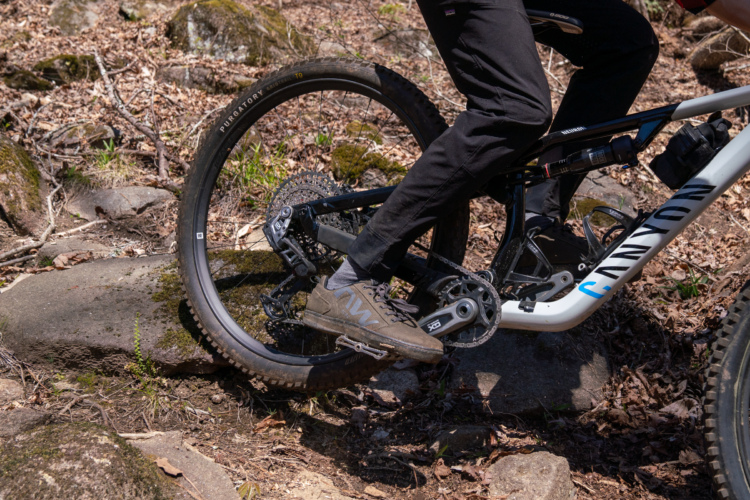
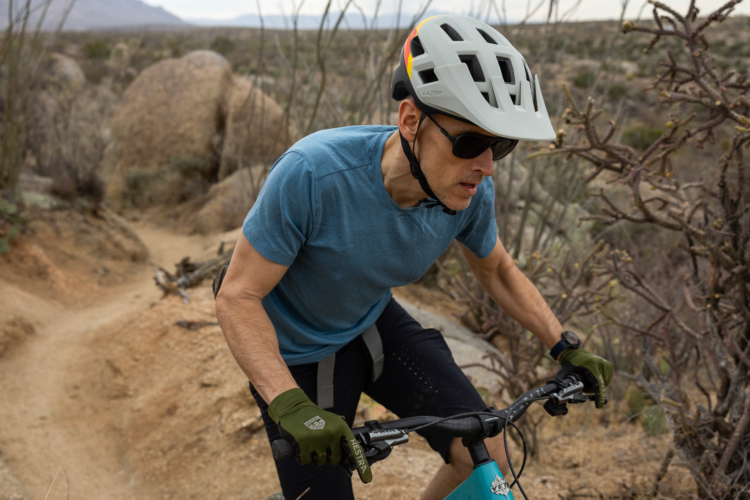
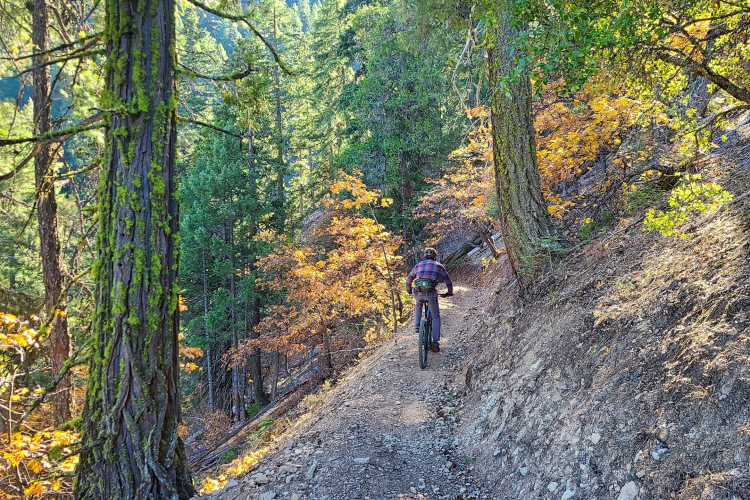
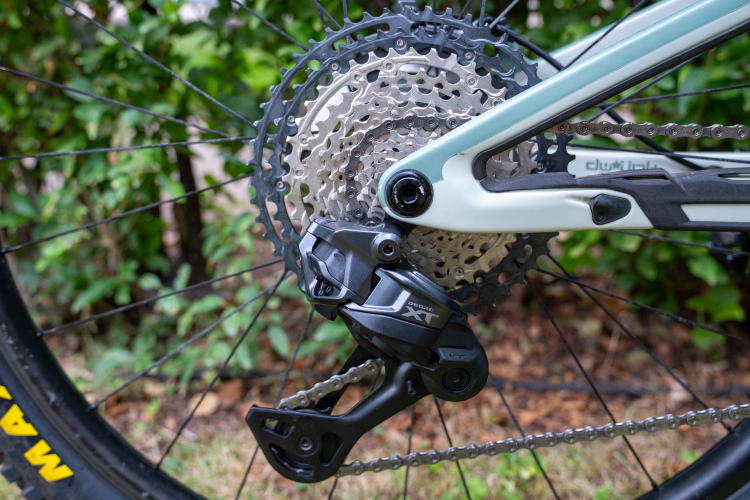
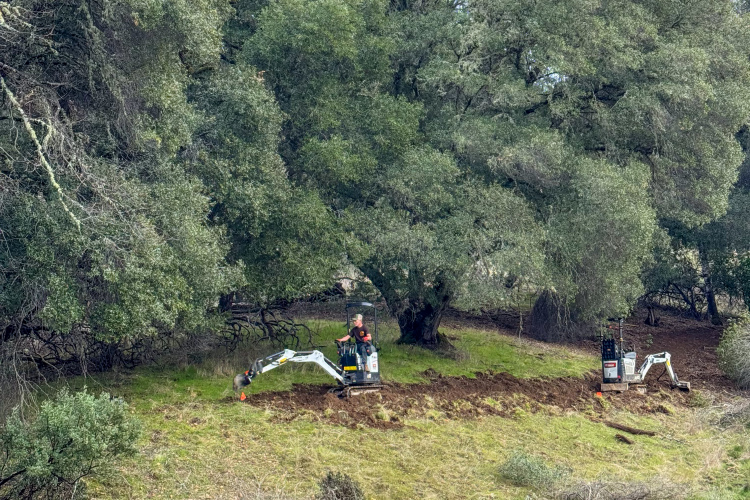


1 Comments
0 minutes ago